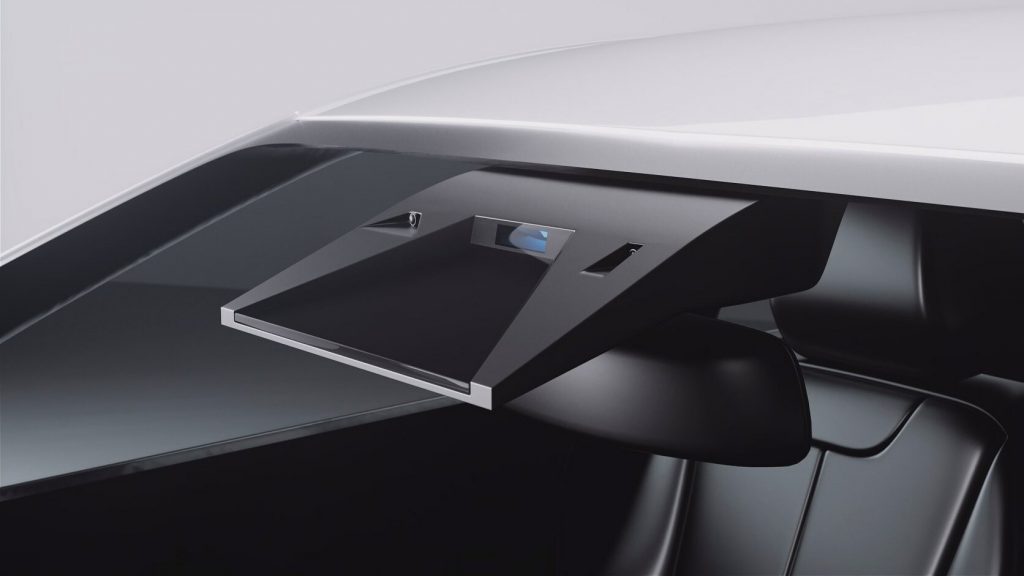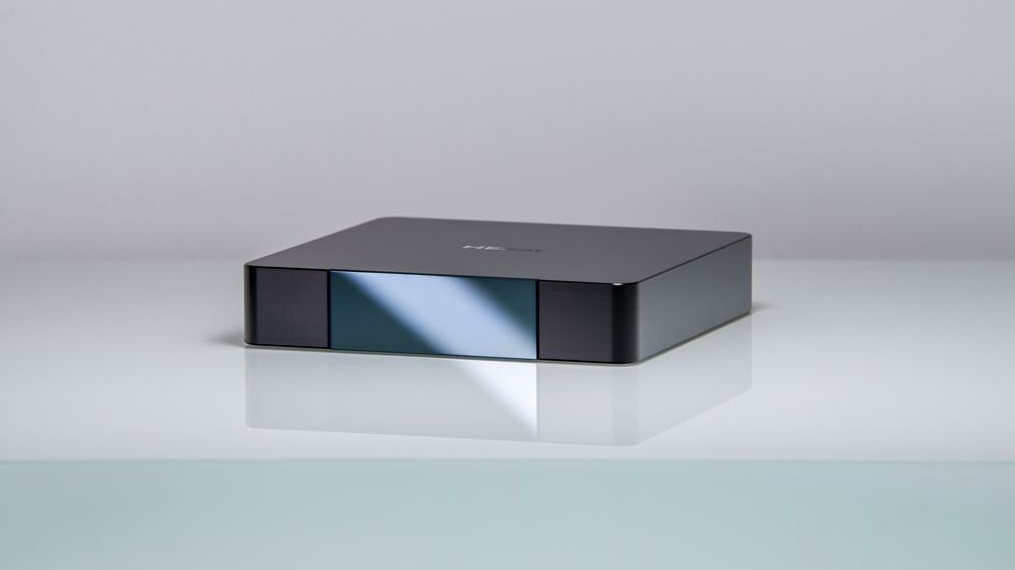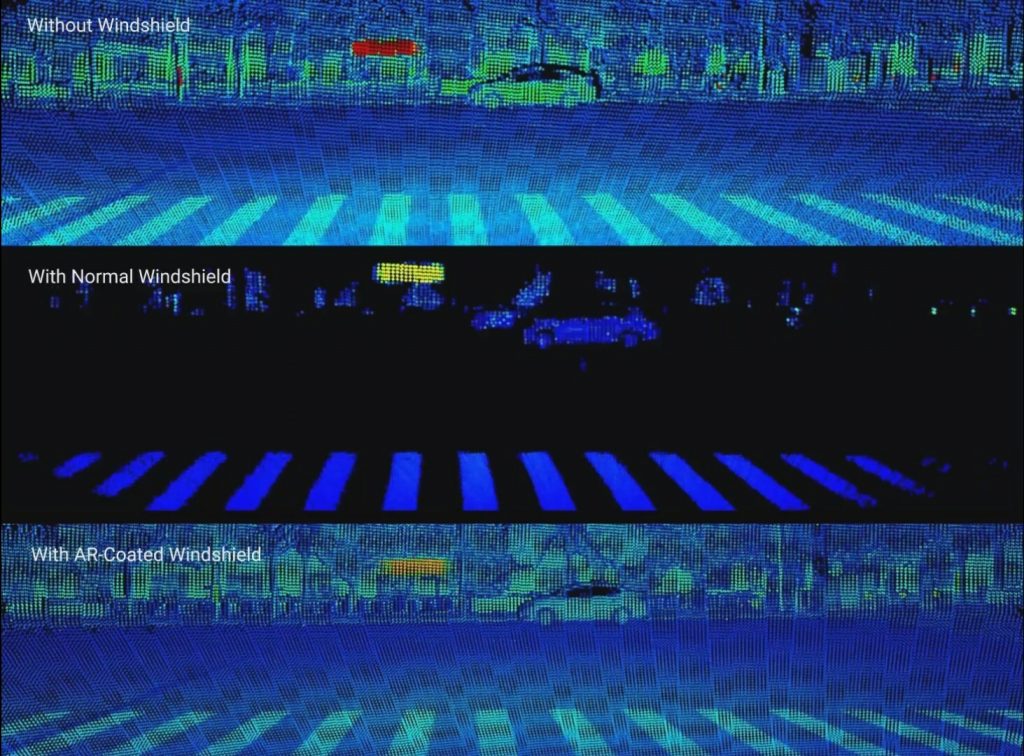
Hesai Technology has unveiled its latest automotive-grade long-range lidar. Named for its extra thin (ET) height, the ET25 is only 25 mm tall. The lightweight ET25 is about half the height of Hesai’s AT128 yet offers higher performance.
As an in-cabin lidar specially designed to be placed behind the windshield, it provides automakers with more application possibilities. It enables car designers to go back to sleeker designs with better aerodynamics, getting around the limitations of most lidars on production and concept cars that have had to be roof-mounted.
While dust and rain can block the lidar’s FOV (field of view), an in-cabin design allows for quick cleaning via the windshield wipers and improves lidar performance in more scenarios.
All sensors integrated into the cabin require some space between them and the windshield, the space called the optical keep-out zone (KOZ). The thicker the sensor, the more KOZ it needs.
The ET25 has less than half the KOZ compared to other long-range lidars with a thickness of 45 mm. Since the sensor bracket is placed above the driver, a smaller KOZ takes less in-cabin space and reduces the impact on the driver’s vision.

Normally when near-infrared laser light emitted by the lidar encounters traditional car glass, it causes signal attenuation, which lowers the maximum range and resolution. Therefore, integrating the lidar with other devices behind a normal windshield, such as cameras and rain sensors, poses a great challenge.
On the ET25 release date, Hesai officially announced a joint strategic cooperation with Fuyao Group to address this challenge. China’s largest automotive glass supplier developed a custom front windshield optimized for infrared light transmittance, nearly eliminating the signal attenuation problem caused by ordinary glass and leaving the point cloud effect “uncompromised.”
With 120° height x 25° vertical FOV, the ET25’s detection range can reach 250 m without a windshield. That drops just a bit to 225 m behind the customized windshield with a transmittance of more than 85%. The company says that the parameters of the mass-produced version may change, making it customizable as needed.
With a minimum resolution of only 0.05° x 0.05°, ET25 brings ultra-high resolution and long-range 3D perception to smart cars. Its frequency exceeds 3 million points per second.
The ET25’s upgraded laser receivers increase sensitivity by several times. As a result, the ranging capability of the 905-nm lidar is increased to over 250 m for objects with 10% reflectivity, helping smart cars to assess risks promptly and make safer decisions in complex road conditions.

Another major challenge for the use of in-cabin lidar near the rearview mirror area is high-temperature weather. If the power consumption of the lidar is too high, it cannot be placed in the cabin due to serious overheating problems.
The ET25 consumes only 12 W, so even in hot summer environments, it can work continuously while maintaining high-performance operation. In addition, the lower power consumption saves on electric vehicle battery energy.
High-end and electric vehicles have more demanding NVH (noise, vibration, and harshness) needs. For instance, the cabin of a luxury brand passenger electric vehicle is generally around 40-50 dB(A). The noise level of ET25 is less than 25 dB, which is lower than the noise level in a quiet library.
Hesai believes innovations like those of the ET25 and the company’s recent design wins will help it continue to lead the global lidar market.
In 2022, the company says its annual revenue and delivery volume exceeded the combined sum of the eight lidar companies listed on the U.S. stock market. Its numbers come from data it collected from public financial reports of its eight U.S. publicly listed peers.
Hesai’s AT128 has won over several million units of expected volume from 11 leading OEMs and tech companies including Li Auto, JiDu, HiPhi, Lotus, Changan, and SAIC. Beginning mass production and delivery in July 2022, the AT128 powers Li’s L9, L8 Max, and L7 Max; Hiphi’s Z, and the Lotus Eletre.

